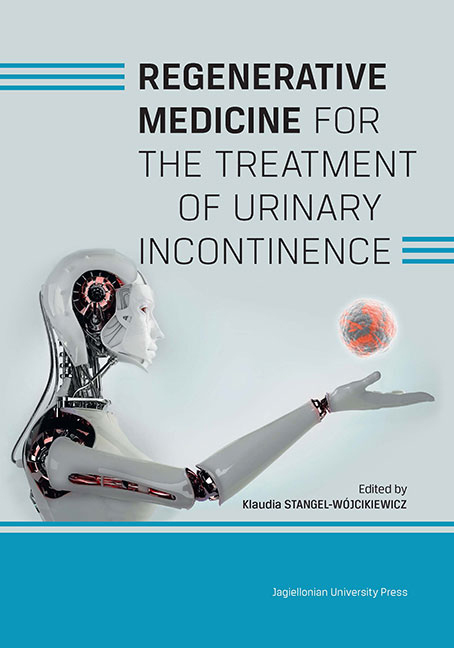Book contents
- Frontmatter
- Contents
- Preface
- Introduction
- Chapter 1 Urinary incontinence in women - outline of the problem
- Chapter 2 Anatomy of the urogenital system
- Chapter 3 Clinical types of urinary incontinence
- Chapter 4 Treatment of stress urinary incontinence
- Chapter 5 Regenerative medicine for the treatment of urinary incontinence
- Chapter 6 Virtual Patient system - simulations of clinical encounters for medical education. Case study of a woman with urinary incontinence
- Chapter 7 Development of a robotic tool aiding a new stem cell-based treatment for stress urinary incontinence in women
- Chapter 8 Difficulties and limitations of cell-based therapy for the treatment of urinary incontinence
- Summary
- List of authors
Chapter 6 - Virtual Patient system - simulations of clinical encounters for medical education. Case study of a woman with urinary incontinence
Published online by Cambridge University Press: 03 January 2018
- Frontmatter
- Contents
- Preface
- Introduction
- Chapter 1 Urinary incontinence in women - outline of the problem
- Chapter 2 Anatomy of the urogenital system
- Chapter 3 Clinical types of urinary incontinence
- Chapter 4 Treatment of stress urinary incontinence
- Chapter 5 Regenerative medicine for the treatment of urinary incontinence
- Chapter 6 Virtual Patient system - simulations of clinical encounters for medical education. Case study of a woman with urinary incontinence
- Chapter 7 Development of a robotic tool aiding a new stem cell-based treatment for stress urinary incontinence in women
- Chapter 8 Difficulties and limitations of cell-based therapy for the treatment of urinary incontinence
- Summary
- List of authors
Summary
Many educational and scientific institutions, e.g. schools and universities, modernise their strategies through the implementation of different types of e-learning systems dedicated for the management of communication, human resources and knowledge. Similar systems emerge in medical education as well, particularly to support conventional teaching methods, but also for distance learning. Therefore, clinical simulators, biological 3D models, tools for remote medical consultations, medical taxonomies, semantic networks and virtual patients are increasingly often employed in the teaching process.
The problem of UI in women has been presented using a simulation of a student-patient clinical encounter in the Virtual Patient system. The medical case history of a female patient with UI allows the student to ‘meet’ the patient and track individual therapeutic stages, such as medical interview, successive recommendations, test results and positive treatment outcome. The Virtual Patient system, through its electronic format, provides a large batch of information (technical details and basic knowledge) in the areas of medicine which are closely related to the analysed case, without losing a holistic approach.
Individual therapeutic stages are presented on electronic flashcards with professional information and supplemented with multimedia materials to enhance the effective analysis of the case (especially for students from the generation of ‘digital natives’) [1].
The possibility of enhancing general knowledge by adding regular comments (to complete information on what has not been explained in the main text) and expert notes (related to more advanced medical knowledge) helps explain the causes of events and expands knowledge. The Virtual Patient system is an example of an IT tool supporting the decision-making process. The possibility of training the skill of decision-making is one of the most valuable advantages of such systems. Students, by analysing the given case, can test themselves as future physicians without the risk of making mistakes or errors bearing real-life consequences. This opportunity is priceless at the initial stage of medical studies. Moreover, students can verify their knowledge almost on an ongoing basis, which makes the learning process highly effective (often through learning from mistakes). It is also important that the cases used by the student to learn making correct decisions come from real life.
- Type
- Chapter
- Information
- Publisher: Jagiellonian University PressPrint publication year: 2016

